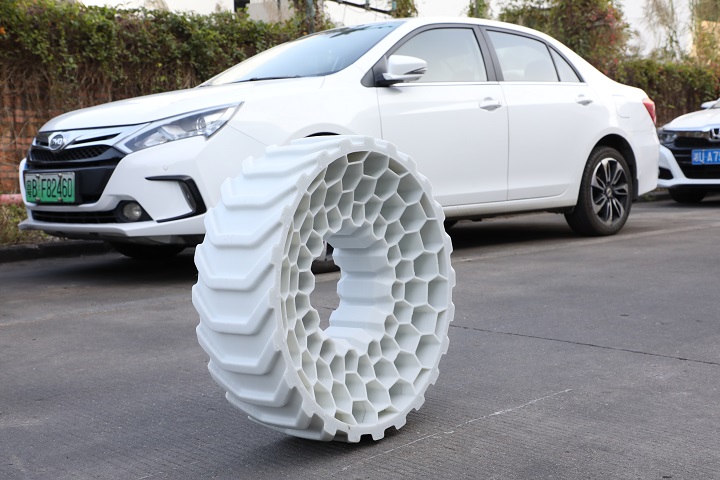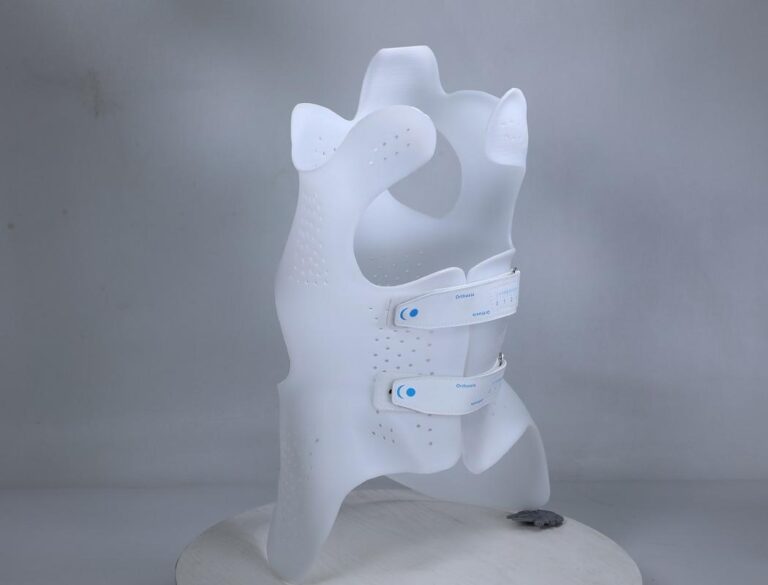Table of Contents
3D printed car parts are revolutionizing the automotive industry, offering a flexible, time- and cost-effective alternative to traditional manufacturing methods. This advanced technology enables the creation of three-dimensional objects from digital files, facilitating everything from prototyping to the production of fully functional car components. Whether for large companies or small businesses, 3D printing car parts is becoming increasingly accessible and affordable. In this blog, we’ll explore how 3D printing is used in the automotive industry, the strength of 3D printed car parts, the best materials for these parts, and the top 3D printers for automotive applications.

Is 3D Printing Used in the Automotive Industry?
Absolutely, 3D printing has found extensive applications in the automotive industry. Initially utilized for prototyping, 3D printing now enables the production of a wide range of car parts, from simple components like ducts and vents to complex mechanical pieces. The flexibility of 3D printing allows manufacturers to create custom parts quickly and efficiently, reducing production costs and time.
The technology’s versatility is not limited to large-scale manufacturers. Hobbyists, small businesses, custom body shops, and racing teams also leverage 3D printing to produce unique and customized parts, enhancing performance and aesthetics. The ability to print on demand reduces the need for large inventories, further lowering costs and improving efficiency.
Can You 3D Print Automotive Parts?
Yes, you can 3D print automotive parts. With advancements in 3D printing technology, creating car parts has become more accessible and practical. Parts like air ducts, engine covers, and even some mechanical components can be 3D printed with high precision and durability. The advent of Fused Granulate Fabrication (FGF), which uses plastic pellets as the primary material, has further expanded the possibilities. FGF technology allows for significant cost savings by using plastic pellets and recycled plastics instead of traditional filaments.
For example, manufacturing aids play a crucial role in assembly operations. These operations can be complex, prone to quality issues, and unpredictable in terms of efficiency and time. While manufacturing aids like jigs, fixtures, grippers, and locators are often used to improve costs, quality, and time, they can also be complex and require frequent modifications.
Fused Granulate Fabrication (FGF) 3D printing solutions for manufacturing aids allow production and assembly operations to optimize the assembly process while controlling manufacturing and inventory costs. With FGF, you can tailor jigs, fixtures, grippers, and locators to specific processes and components and quickly iterate for continuous improvement without costly traditional tool making and burdensome inventory costs.
Are 3D Printed Car Parts Strong?
3D printed car parts can be incredibly strong, depending on the materials and printing techniques used. Modern 3D printing materials, such as carbon fiber reinforced composites, offer excellent mechanical properties that can rival or even surpass those of traditionally manufactured parts. These materials provide high strength, durability, and resistance to various environmental factors, making them suitable for a wide range of automotive applications.
For example, carbon fiber reinforced polycarbonate (PC-CF) offers exceptional strength and heat resistance, making it ideal for high-stress components. Similarly, ABS-CF, a carbon fiber reinforced ABS, provides excellent impact resistance and dimensional stability, essential for parts exposed to dynamic loads and vibrations.
What is the Best 3D Material for Car Parts?
The choice of material is crucial in determining the strength and performance of 3D printed car parts. Here are some of the best materials for automotive parts:
ABS-CF
ABS-CF is a reinforced ABS pellet containing 20% carbon fiber. It boasts outstanding mechanical properties, good dimensional stability, and excellent printing performance, making it ideal for large-scale 3D printing. ABS-CF is particularly useful for parts that require a balance of strength, flexibility, and thermal resistance.

PC-CF
This material is a carbon fiber reinforced polycarbonate composite. PC-CF is based on PC raw materials and is mixed with 15%-25% carbon fiber, carbon black, metal fiber, metal powder, and a permanent anti-static masterbatch. It offers high strength and durability. PC-CF is suitable for components that must withstand high temperatures and mechanical stress, such as engine bay parts and structural elements.
PAHT-CF
PAHT-CF is easy to print with no warping and high Z-axis strength. It is more chemically resistant than most PA grades and can withstand high temperatures up to 150°C. It is suitable for industrial jigs, fixtures, automotive parts, and drone components. PAHT-CF is known for its high tensile strength and resistance to harsh chemicals, making it ideal for parts exposed to aggressive environments.
The Environmental Impact of 3D Printing Car Parts
One of the significant advantages of 3D printing car parts is its positive environmental impact. Traditional manufacturing methods often involve substantial waste and energy consumption. In contrast, 3D printing is an additive process, meaning material is added layer by layer to create the part, resulting in minimal waste.
Moreover, 3D printing allows for the use of recycled materials, contributing to a circular economy. Initiatives like Print Your City are raising awareness about plastic waste by using recycled plastics to 3D print public amenities such as park benches. This approach not only reduces waste but also promotes the recycling of plastics, which are abundant in automotive applications.
The use of pellet-based 3D printing, particularly with recycled plastics, further enhances the sustainability of the manufacturing process. By using pellets instead of traditional filaments, manufacturers can significantly reduce material costs and waste, making 3D printing a more environmentally friendly option.
What is the Best 3D Printer for Car Parts?
Selecting the right 3D printer is essential for producing high-quality automotive parts. Here are three of the best 3D printers for car parts:
G5Ultra Pellet 3D Printer
- Printing Size: 500x500x400mm
- Features:
- Nozzle temperature up to 400℃
- Rapid heating of hot bed up to 120℃
- Screw extruder design
- High-speed printing
The G5Ultra Pellet 3D Printer is a desktop, high-speed industrial production system utilizing low-cost thermoplastic pellet feedstocks. It is ideal for smaller-scale production and rapid prototyping.

G12 Pellet 3D Printer
Printing Size: 1200x1000x1000mm
Features:
- Nozzle temperature up to 450℃
- Rapid heating of hot bed up to 120℃
- High Flow Screw Extrusion
- Powerful Servo Motor
The G12 Pellet 3D Printer is a large-format pellet extrusion printer capable of printing medium-to-large format parts. It offers robust performance and precise control, making it suitable for producing larger automotive components.
G40 Pellet 3D Printer
Printing Size: 3725x2500x1330mm
Features:
- Large working space
- Workbench design
- CNC five-axis head
- High flow screw extrusion design
The G40 Pellet 3D Printer, PioCreat’s largest industrial printer, combines versatility and reliability. It is ideal for industrial-scale automotive projects, offering a large working area and advanced features for complex part production.
Wrapping Up
The adoption of 3D printing in the automotive industry is transforming how car parts are designed and manufactured. The ability to create custom, high-strength parts quickly and cost-effectively makes 3D printing an attractive option for manufacturers, hobbyists, and small businesses alike. By utilizing advanced materials like ABS-CF, PC-CF, and PAHT-CF pellets, and leveraging cutting-edge 3D printers, the automotive sector is poised for continued innovation and efficiency.
3D printing car parts not only enhances the design and functionality of automotive components but also promotes sustainability through reduced waste and the use of recycled materials. As technology continues to evolve, the possibilities for 3D printing in the automotive industry are limitless, promising a future where customized, high-performance parts are readily available to meet the diverse needs of the market.



